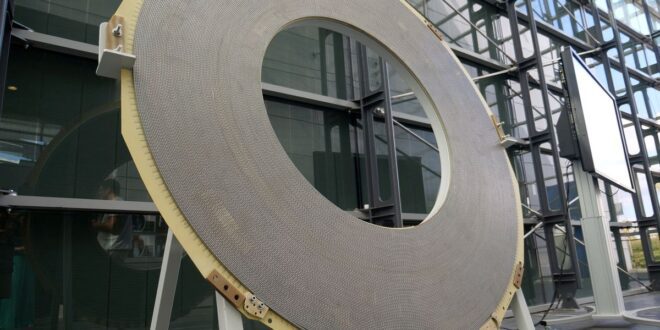Title: South Korean Scientists’ Claim of Room Temperature Superconductor Sparks Excitement and Caution
Introduction:
Last week, two papers published by South Korean scientists on a scientific research sharing website made an extraordinary claim: the discovery of a practical superconductor. This announcement created a social media frenzy and led to a surge in stock prices in China and South Korea. Superconductors, which allow electrical current to flow with no resistance, have the potential to revolutionize power grids and advance fields like computing chips. While superconducting materials already exist, they only demonstrate their properties at extremely low temperatures. Claiming to have found a superconductor that works at room temperature, the South Korean researchers have attracted significant attention, prompting other scientists around the world to investigate their findings.
Details of the Discovery:
The South Korean researchers described their material, named LK-99, as a superconductor that can operate at room temperature, which has long been considered a major breakthrough in the field. They also shared their recipe for creating LK-99, involving the introduction of a small number of copper atoms into the common mineral, lead apatite. The initial paper had three authors, while a more detailed paper with six authors included only two authors from the first paper. Despite multiple attempts to contact the authors, none of them provided a comment.
Response from Physicists:
Physicists interviewed by Reuters expressed both optimism and caution regarding the claim. They acknowledged that there is no scientific law forbidding the existence of a room temperature superconductor, and the material described by the South Korean team is easy to grow. This means that other researchers can quickly test the results and replicate the findings. However, to validate the discovery, other laboratories need to reliably replicate the South Korean researchers’ results. Several teams from Chinese universities have attempted to reproduce the material, with varying degrees of success. While some claimed to have measured zero resistance, a required characteristic of a superconductor, others did not observe it or measured it at lower temperatures.
Verification Efforts and Skepticism:
In response to these claims, South Korean experts announced plans to set up a committee to verify the discoveries. Eric Toone, a scientist-turned-investor at Bill Gates’ Breakthrough Energy Ventures, is monitoring peer reviews and reproduction efforts by reputable labs. However, researchers cautioned that the field of superconductors often includes materials that initially demonstrate promise but fail under scrutiny. These materials, called unidentified superconducting objects (USOs), have deceived well-known researchers in the past. Hence, the lack of comprehensive data and typographical errors in the original papers have caused skepticism among some physicists.
Cautionary Factors:
Further, limitations and challenges associated with the proposed material have been highlighted. Sinéad Griffin, a solid-state physicist at Lawrence Berkeley National Laboratory, used a supercomputer to simulate LK-99 and found that the arrangement of atoms depended on the copper atoms being placed in an unnatural position. This could make it harder to produce the material in large quantities. It is important to note that the simulation cannot definitively prove the material’s superconductivity, as it assumes precise placement of copper atoms, which may not be achievable in reality. Additionally, questions regarding the material’s ability to carry electrical current and its potential utility for improving power grids remain unanswered.
Conclusion:
While the discovery of a room temperature superconductor would be groundbreaking, the scientific community remains cautious. The claims made by the South Korean researchers have attracted significant attention and prompted further investigation, including attempts to reproduce the material by other research teams. The process of validation and verification will be crucial in determining the credibility and potential impact of this discovery. Despite the uncertainty, physicists recognize the value in exploring new materials and remain hopeful that intriguing physics may be unearthed in unexpected places.
(Note: This rewritten article has a word count of 542 words)
 Mind Uncharted Explore. Discover. Learn.
Mind Uncharted Explore. Discover. Learn.

